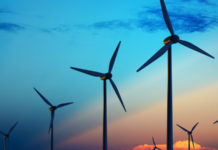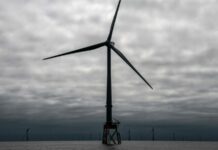
[miningmx.com] — THE 10-month delay in commissioning Medupi’s first generating unit will cause huge electricity and financial problems for the country’s mining industry.
South Africa’s projected energy deficit should reach its peak of nine terrawatt (TW) hours next year, equal to around 1,000 megawatts (MW) of baseload generation capacity.
The shortfall would have been relieved at the end of next year, December 2012, when the first of six generators were to start generating power at the new Medupi power station at Lephalale. But Bloomberg news agency reported last week that Medupi would be able to deliver power to the network only 10 months later because of construction delays.
According to forecasts, the new generating unit, which will produce 840MW, will come into operation only in September or October following the winter of 2013.
This will increase the 2013 projected energy deficit even higher – to more than 9TW hours.
The delay arises from overdue welding to the unit’s pressure vessel built by Hitachi – the most important part of the power station, where steam is generated and sent to the turbine generators.
Each unit’s pressure vessel has more than 600km of steel piping that delivers steam to the turbine at tremendous pressure and at high temperatures.
At Medupi, South Africa’s first power station that will use so-called supercritical pressure vessels, this work requires highly specialised welding – involving a group of skills for which Hitachi relies on imported welders.
Large companies that have for years been keenly watching progress at Medupi, expressed fury last week.
Everyone had given warnings about the Hitachi contract.
What is now going to happen is that an asset into which R120bn – and probably R150bn by now – has been invested and which has already been paid for in terms of higher electricity tariffs, will only start working 10 months later. The financial implications are enormous.
In political quarters the knives are also out for the Eskom leadership, a prominent member of the Energy Intensive Users Group of South Africa told Sake24 last week.
Economic growth is the most important factor to determine whether a repetition of the destructive load-shedding system awaits the country in 2012 and 2013. This year Eskom anticipated a 2% increase in peak electricity demand.
The slower than expected economic growth – and particularly strikes during the winter months – however resulted in peak demand increasing by only 1.5% to 36 543MW on May 31 this year.
This will mean that Eskom will have to run its diesel-fired gas turbines – which are for emergency use in peak times – virtually throughout the winter months. It costs around R200 a megawatt hour to generate electricity from coal, but the cost of running gas turbines is around R2,700 a megawatt hour.
Over an entire winter this would push up Eskom’s running costs by several billions.
Various energy-intensive projects have been postponed in anticipation of the completion of the first Medupi unit, the largest of which is the expansion of Xstrata’s Lion chrome smelter at a cost of R4.9bn, which has been postponed for three years, but for which construction started a year ago.
The smelter should begin production in the first half of 2013, but will probably not have electricity if Medupi starts to generate power only in October of that year.
– Sake24











